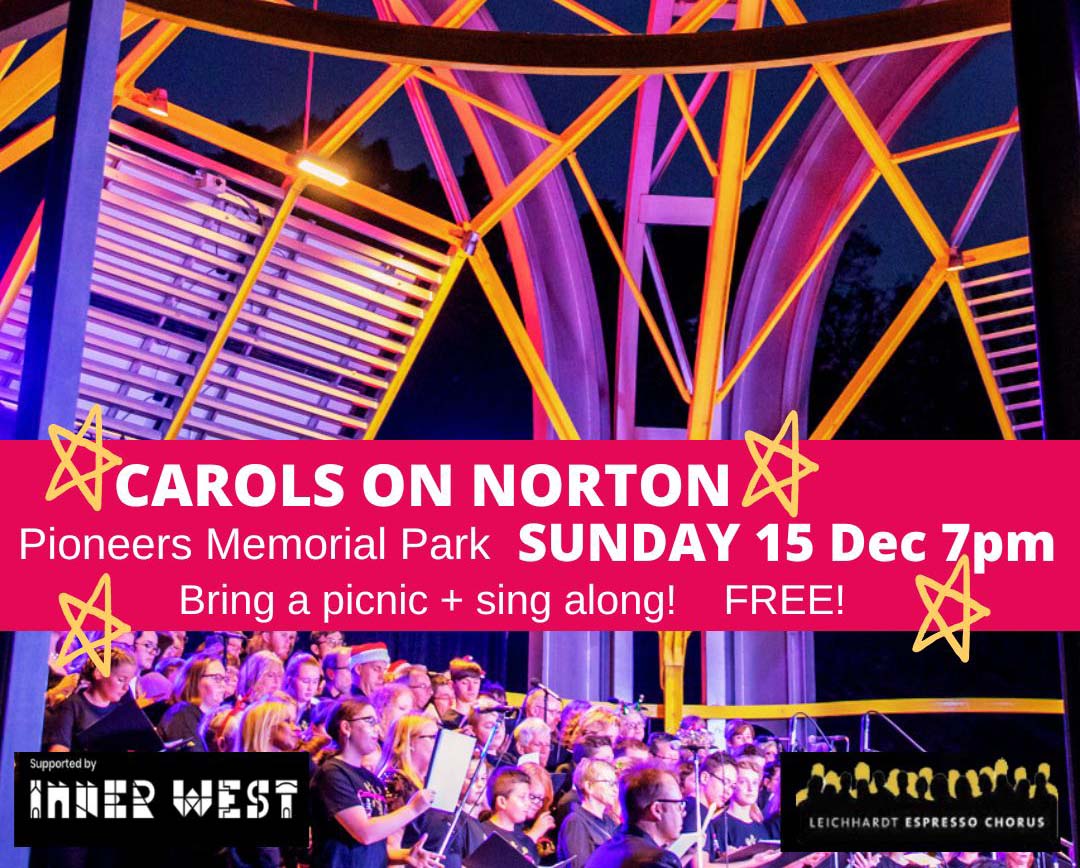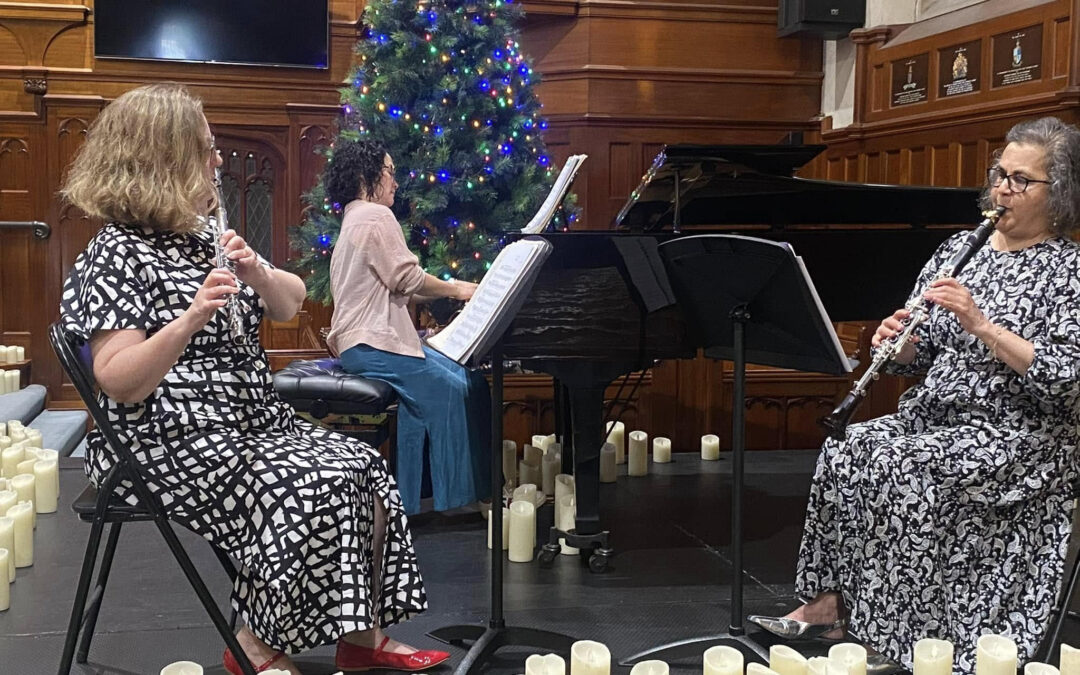Sydney Chamber Music Festival | Revival
October 16, 2022, Manly Art Gallery
After a three year hiatus due to Covid, it was a pleasure to see the Sydney Chamber Music Festival return to the Manly Art Gallery & Museum, where we were surrounded by the wonderful drawings of Salvatore Zoffrea, the gallery’s current exhibition. The Sunday night program was titled REVIVAL and dealt with dance music from the English Renaissance to the twentieth century Spanish inspired tango in Argentina.
Renowned flautist Bridget Bolliger, who had founded the festival, was in fine form when she and a consort of string players (Karina Moss-Hollands, violin 1; Wendy Kong, violin 2; Jacqui Cronin, viola, Timothy Nankervis, cello), guitarist Vladimir Gorbach and percussionist Tim Brigden played five Galliards (Renaissance dances) by John Dowland. The stately elegance of this music remained light-hearted in this performance – one could imagine people dancing gracefully to this music, whilst making amusing comments or plotting intrigue.
We moved forward about a century, when Vladimir Gorbach played Buxtehude’s Suite in E minor. His nimble fingers danced along the guitar strings while he played the four graceful movements, all of which were contemporary dances in the seventeenth century (Allemande, Courante, Sarabande & Gigue).
 A Renaissance revival in the twentieth century led to Sir Peter Maxwell Davies composing Renaissance Scottish Dances. A larger ensemble returned to the stage, now including James Julian on clarinet.This composition began with a slow Intrada, with a stately drum beat and a feeling of hesitancy. A more lively Currant followed, where the violin and the cello had a rustic grunt, contrasting with the Glockenspiel accompaniment. Beautifully played guitar featured in the third movement: Sweit smyling Katie loves me (with Ladie Louthian’s Lilte) accompanied by subtle, damped pizzicato on cello. Last Time I came over the Mure gave more prominence to the clarinet, played by James Julian. His music danced with the violin, played by Karina Moss-Hollands. They gave the music a jaunty rustic bounce. The 5th movement, Ane Exempill of Tripla, was even more lively, accompanied on tambourine. A more sorrowful mood was struck with Remember me my dear, opening with slow guitar chords and eventually joined by clarinet and flute, violin and cello. Behind it all was a gentle marimba rumble. The work concluded with all of the musicians playing Almayne, a movement alternating between lively and boisterous, where the clarinet imitated a hornpipe to the accompaniment of wood blocks. It was all good fun!
A Renaissance revival in the twentieth century led to Sir Peter Maxwell Davies composing Renaissance Scottish Dances. A larger ensemble returned to the stage, now including James Julian on clarinet.This composition began with a slow Intrada, with a stately drum beat and a feeling of hesitancy. A more lively Currant followed, where the violin and the cello had a rustic grunt, contrasting with the Glockenspiel accompaniment. Beautifully played guitar featured in the third movement: Sweit smyling Katie loves me (with Ladie Louthian’s Lilte) accompanied by subtle, damped pizzicato on cello. Last Time I came over the Mure gave more prominence to the clarinet, played by James Julian. His music danced with the violin, played by Karina Moss-Hollands. They gave the music a jaunty rustic bounce. The 5th movement, Ane Exempill of Tripla, was even more lively, accompanied on tambourine. A more sorrowful mood was struck with Remember me my dear, opening with slow guitar chords and eventually joined by clarinet and flute, violin and cello. Behind it all was a gentle marimba rumble. The work concluded with all of the musicians playing Almayne, a movement alternating between lively and boisterous, where the clarinet imitated a hornpipe to the accompaniment of wood blocks. It was all good fun!
After the Interval, where we had a chance to enjoy the exhibition of Zoffrea’s drawings, Bridget Bolliger introduced the “Spanish” (Argentinian) part of the program. Later she was to tell us proudly that the guitar played by Vladimir Gorbach had never been played before, having just been made by her brother, Matthew. He had made an instrument that was extra robust and loud, so that it could hold its own, when played in an ensemble, without the need for a microphone.
 First we were to hear Ginastera’s Impressions de la Puna. This youthful work (he was only 18 when he composed it) was written for flute and string quartet. Bridget Bolliger played the flute beautifully throughout. The first movement, Quena (flute) evokes the lonely grasslands (la Puna) of his homeland and features a melancholy flute solo. The influence of Impressionism could be felt in its reminiscence of Debussy in the second movement Cansion (Song). It is a slow Barcarolle. The third movement Danza is full of Argentinian dance rhythms. Bridget played wonderful trills on the flute while the strings played pizzicato.The work ended with a discordant rumble on the strings – all good fun!
First we were to hear Ginastera’s Impressions de la Puna. This youthful work (he was only 18 when he composed it) was written for flute and string quartet. Bridget Bolliger played the flute beautifully throughout. The first movement, Quena (flute) evokes the lonely grasslands (la Puna) of his homeland and features a melancholy flute solo. The influence of Impressionism could be felt in its reminiscence of Debussy in the second movement Cansion (Song). It is a slow Barcarolle. The third movement Danza is full of Argentinian dance rhythms. Bridget played wonderful trills on the flute while the strings played pizzicato.The work ended with a discordant rumble on the strings – all good fun!
Alberto Ginastera’s Sonata for guitar, Op. 47 was written in 1976 and is considered one of the most important works written for guitar with its wildly original and imaginative use of the instrument including various percussive techniques and strumming the strings between the nut and tuning pegs. The sonata begins with a series of characteristic “guitar chords” played on open strings. The composer described the first movement, Esordio, as “a solemn prelude followed by a song inspired by Kecua music”. Vladimir Gorbach played this sonata superbly. The new guitar responded beautifully to the innovative pluckings, beatings and slides during the subsequent movements.
When thinking about modern South American music, the tango immediately springs to mind. When thinking about the tango, it is the composer Astor Piazzolla who revolutionised traditional tango music, blending it with jazz and classical elements to create a new form, nuevo tango. He wrote Histoire du Tango in 1985 for guitar and flute – a perfect combination for tonight’s performers.
The piece is a history of the tango in movements such as, Bordel 1900, describing its origin in 1882 Buenes Aires; Café 1930, when people stopped dancing and listened to the music instead; Nightclub 1960, which incorporates the influence of the bossa nova craze. The more sultry Café scene contrasted sweet melodies with melancholy ones. The Nightclub scene had a distinctly ’60’s feel, with hints of bossa nova. Rhythm was enhanced with slaps to the guitar.
Bridget Bolliger and Vladimir Gorbach played together in in perfect harmony, exuding exuberance, grace and liveliness, each with their distinctive technique and expertise. The audience were entranced!
After the enthusiastic applause died down, I realised I had been sitting next to Matthew Bolliger – I showed him one of my sketches of his guitar, before he was engulfed by old friends…. What a wonderful evening!





























